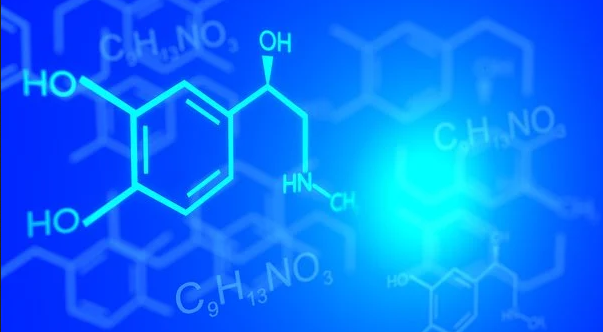
On May 8th, 2023, the European Commission published the revised regulation (EU) 2023/923 of Annex XVII of the REACH Regulation (EC) No 1907/2006 in its official journal. The regulation aims to restrict the use of lead stabilizers in polyvinyl chloride (PVC). In addition, the regulation proposes some exceptions for the use of recycled PVC products. The revision will come into effect 20 days after the official announcement. The second column of entry 63 of Annex XVII of the REACH Regulation now includes new restrictions on lead and its compounds.
15. Shall not be placed on the market or used in articles produced from polymers or copolymers of vinyl chloride (‘PVC’), if the concentration of lead is equal to or greater than 0,1 % by weight of the PVC material. 16. Paragraph 15 shall apply with effect from 29 November 2024. 17. By way of derogation, paragraph 15 shall not apply to PVC articles containing recovered flexible PVC until 28 May 2025. 18. By way of derogation, paragraph 15 shall not apply to the following PVC articles containing recovered rigid PVC until 28 May 2033, if the concentration of lead is lower than 1,5 % by weight of the recovered rigid PVC: (a) profiles and sheets for exterior applications in buildings and civil engineering works, excluding decks and terraces; (b) profiles and sheets for decks and terraces, provided that the recovered PVC is used in a middle layer and is entirely covered with a layer of PVC or other material for which the concentration of lead is lower than 0,1 % by weight; (c) profiles and sheets for use in concealed spaces or voids in buildings and civil engineering works (where they are inaccessible during normal use, excluding maintenance, for example, cable ducts); (d) profiles and sheets for interior building applications, provided that the entire surface of the profile or sheet facing the occupied areas of a building after installation is produced using PVC or other material for which the concentration of lead is lower than 0,1 % by weight; (e) multi-layer pipes (excluding pipes for drinking water), provided that the recovered PVC is used in a middle layer and is entirely covered with a layer of PVC or other material for which the concentration of lead is lower than 0,1 % by weight; (f) fittings, excluding fittings for pipes for drinking water. From 28 May 2026, rigid PVC recovered from the categories of articles referred to in points (a) to (d) shall only be used for the production of new articles of any of those categories. Suppliers of PVC articles containing recovered rigid PVC with a concentration of lead equal to or greater than 0,1 % by weight of the PVC material shall ensure, before placing those articles on the market, that they are visibly, legibly and indelibly marked with the statement: “Contains ≥ 0,1 % lead”. Where the marking cannot be provided on the article due to the nature of the article, it shall be on the packaging of the article. Suppliers of PVC articles containing recovered rigid PVC shall submit to national enforcement authorities upon request documentary evidence to substantiate the claims on the recovered origin of the PVC in those articles. Certificates issued by schemes to provide proof of traceability and recycled content, such as those developed according to EN 15343:2007 or equivalent recognised standards, may be used to substantiate such claims for PVC articles produced in the Union. Claims made on the recovered origin of the PVC in imported articles shall be accompanied by a certificate that provides equivalent proof of traceability and recycled content, issued by an independent third party. By 28 May 2028, the Commission shall review this paragraph in light of new scientific information and, if appropriate, modify it accordingly. 19. By way of derogation, paragraph 15 shall not apply to: (a) PVC-silica separators in lead acid batteries, until 28 May 2033; (b) articles covered by paragraph 1, in accordance with paragraphs 2 to 5, and by paragraph 7 in accordance with paragraphs 8 and 10; (c) articles within the scope of: (i) Regulation (EC) No 1935/2004; (ii) Directive 2011/65/EU; (iii) Directive 94/62/EC; (iv) Directive 2009/48/EC. 20. By way of derogation, paragraph 15 shall not apply to PVC articles placed on the market until 28 November 2024. |
CIRS Reminder
Lead is considered a toxic substance that can affect the development of the nervous system, lead to chronic kidney disease, and have adverse effects on blood pressure. This regulation aims to reduce human exposure to lead. The implementation of the regulation will have a certain impact on the use of PVC materials. According to this regulation, PVC products containing lead stabilizers will be restricted, and their lead concentration must not exceed 0.1% of the weight of the PVC material. This means that the use of lead stabilizers as additives for PVC compounds is no longer allowed in the EU. Since lead stabilizers can improve the thermal stability and resistance to light degradation of PVC, this may affect the production and use of certain PVC products. At the same time, this regulation provides certain exemptions for products made from recycled PVC materials, encouraging more companies to use recycled materials to meet sustainability goals.
If you need any assistance or have any questions, please get in touch with us via service@cirs-group.com.
